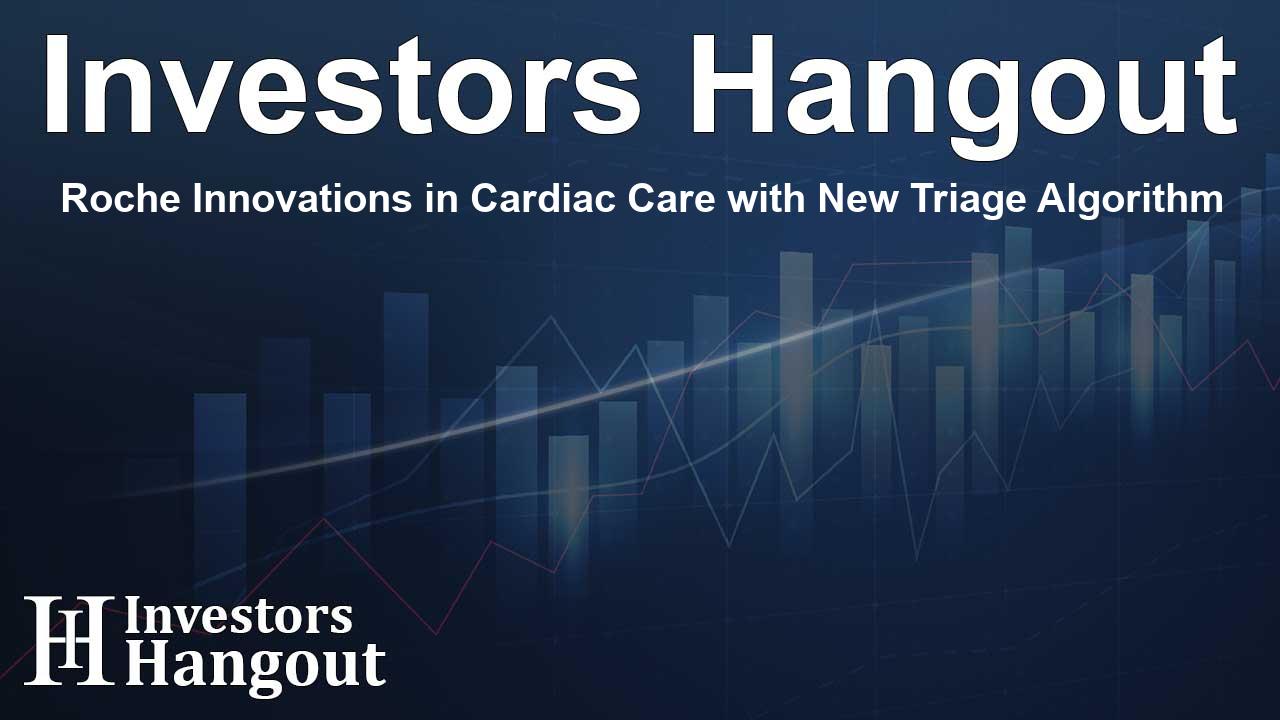Roche Innovations in Cardiac Care with New Triage Algorithm

Revolutionizing Cardiac Care: Roche's New Chest Pain Triage Algorithm
Roche has embarked on a transformative journey in cardiovascular care with the unveiling of its Chest Pain Triage algorithm. Developed collaboratively with Universitätsklinikum Heidelberg, this innovative CE-marked IVD medical device is poised to significantly improve how healthcare professionals assess and respond to patients experiencing chest pain, a prevalent reason for Emergency Department (ED) visits.
Enhancing Emergency Medical Response
In the bustling environment of emergency rooms, rapid and accurate diagnosis is crucial. The Chest Pain Triage algorithm harnesses cutting-edge diagnostic technologies, particularly high-sensitivity cardiac troponin tests, which empower healthcare professionals to quickly discern between cardiac and non-cardiac chest pain. This timely differentiation is essential for effective patient management, especially considering that cardiovascular disease remains a leading cause of global mortality.
Addressing a Global Health Challenge
Each year, a significant portion of emergency department visits is linked to chest pain, making the capability to accurately identify risks indispensable. Roche’s new algorithm not only enhances diagnostics but also aims to streamline patient flow within emergency departments. CEO Matt Sause emphasizes that, by minimizing unnecessary admissions and optimizing care pathways, the algorithm can reduce patient stay times by over three hours.
Streamlined Decision-Making for Better Patient Outcomes
The algorithm's design incorporates a definitive Rule-In, Rule-Out, or Observe recommendation system that aligns with European Society of Cardiology (ESC) guidelines. By choosing the appropriate accelerated pathway based on the timing of blood sample collection, the system simplifies decision-making for clinicians. This proactive approach is crucial in safeguarding patients at risk for acute coronary syndrome (ACS), thereby expediting treatment for those who genuinely require it.
A Comprehensive Tool for Emergency Departments
Roche’s commitment to advancing cardiac care is reflected in its broader cardiometabolic portfolio, which integrates various diagnostic solutions, including the cardiac troponin T assay. These advancements collectively support emergency departments in making fast, informed decisions that can significantly impact patient outcomes. The inclusion of a medical dossier feature further enhances clinical support, allowing seamless incorporation of recommendations into patient records.
Global Availability and Future Solutions
The Chest Pain Triage algorithm is already available in regions including Europe, the Middle East, and Asia, with plans for future integration into workflows in the United States. Roche aims to continually evolve its offerings, merging next-generation digital algorithms, new biomarkers, and advanced laboratory analyzers to provide comprehensive cardiac care solutions.
With over 30 digital solutions under the navify portfolio, Roche is dedicated to transforming healthcare through innovative technology. These solutions are designed to enhance the efficiency of clinical workflows, utilizing electronic health records (EHR) and lab information systems (LIS) for better integration and faster processes.
About Roche and Its Commitment to Health and Innovation
Established in 1896 in Basel, Switzerland, Roche has emerged as a global leader in biotechnology and in-vitro diagnostics. The company's relentless pursuit of scientific excellence focuses on developing innovative medicines and diagnostic tools that enhance the quality of healthcare worldwide. Roche maintains high standards of operational and data security, ensuring compliance with regulations while striving toward sustainability and improved health outcomes.
Frequently Asked Questions
What is the purpose of Roche's Chest Pain Triage algorithm?
The Chest Pain Triage algorithm is designed to improve the assessment and diagnosis of patients presenting with chest pain, helping to quickly rule in or out acute coronary syndrome.
How does the algorithm benefit emergency department workflows?
By simplifying decision-making processes and integrating with existing systems, the algorithm aims to enhance efficiency, reduce patient stay times, and improve overall patient care in emergency settings.
In what regions is the Chest Pain Triage algorithm currently available?
The algorithm is available in Europe, the Middle East, and Asia, with plans for future rollout in the United States.
What technologies does the algorithm utilize?
The algorithm uses advanced diagnostic technologies, including high-sensitivity cardiac troponin testing, to swiftly and accurately assess chest pain.
How does Roche support clinicians with this algorithm?
Roche provides a medical dossier for clinicians, allowing them to document and integrate findings directly into patient records, facilitating better decision-making and care continuity.
About The Author
Contact Lucas Young privately here. Or send an email with ATTN: Lucas Young as the subject to contact@investorshangout.com.
About Investors Hangout
Investors Hangout is a leading online stock forum for financial discussion and learning, offering a wide range of free tools and resources. It draws in traders of all levels, who exchange market knowledge, investigate trading tactics, and keep an eye on industry developments in real time. Featuring financial articles, stock message boards, quotes, charts, company profiles, and live news updates. Through cooperative learning and a wealth of informational resources, it helps users from novices creating their first portfolios to experts honing their techniques. Join Investors Hangout today: https://investorshangout.com/
The content of this article is based on factual, publicly available information and does not represent legal, financial, or investment advice. Investors Hangout does not offer financial advice, and the author is not a licensed financial advisor. Consult a qualified advisor before making any financial or investment decisions based on this article. This article should not be considered advice to purchase, sell, or hold any securities or other investments. If any of the material provided here is inaccurate, please contact us for corrections.
